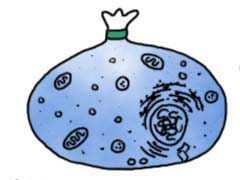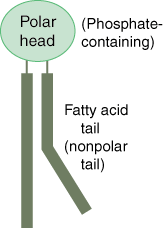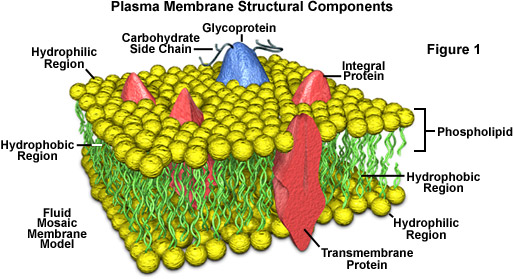NATURAL SCIENCES AND ENVIRONMENTAL EDUCATION DEPARTMENT
SIXTH GRADE BIOLOGY
INSTRUCTOR: JOHN FREDY CASTRO
Cell Membranes
When you think about a membrane, imagine it is like a big plastic bag with small holes. That bag holds all of the cell pieces and fluids inside the cell and keeps any bad things outside the cell. The holes are there to let some things move in and out of the cell.
Cell Membranes are Flexible!
The cell membrane is not solid. Compounds called proteins and phospholipids make up most of the cell membrane. The phospholipids make the basic bag. The proteins are found around the holes and help move molecules in and out of the cell.
Scientists describe the organization of the phospholipids and proteins with the fluid mosaic model.
That model shows that the phospholipids are in a shape like a head and a tail.
The heads like water (hydrophilic) and the tails do not like water (hydrophobic). The tails bump up against each other and the heads are out facing the watery area surrounding the cell. The two layers of cells are called the bilayer.
Embedded in the Membrane
Scientists have shown that the proteins float in that bilayer. Some of them are found on the inside of the cell and some on the outside. Other proteins cross the bilayer with one end outside of the cell and one end inside. Those proteins that cross the layer are very important in the active transport of ions and small molecules.
Different Membranes
As you learn more about the organelles inside of the cell, you will find that most have a membrane. They do not have the same chemical makeup as the cell membrane. Each membrane is unique to the organelle. The membrane that surrounds a lysosome is different from the membrane around the endoplasmic reticulum. They are both different from the cell membrane.
Some organelles have two membranes. A mitochondrion has an outer and inner membrane. The outer membrane contains the mitochondrion parts. The inner molecule holds digestive enzymes that break down food.
Some organelles have two membranes. A mitochondrion has an outer and inner membrane. The outer membrane contains the mitochondrion parts. The inner molecule holds digestive enzymes that break down food.
While we talk about membranes all the time, you should remember they all use a basic phospholipid bilayer, but have many other different parts.
Membrane Proteins
We spoke a little about the cell membrane and its structure. We also discussed the lipid bilayer. That lipid bilayer is not smooth around the entire cell. You will find thousands (millions?) of proteins throughout the cell membrane. Some are just on the inside of the cell and some on the outside. A special few cross the cell membrane. Each type of protein has a specific purpose. There are also embedded proteins in the other membranes for cell organelles.
A Tale of Two Types
There are two types of proteins in the cell membrane -- peripheral proteins and integral proteins. As you can guess from the name, integral membrane proteins are permanently connected to the cell membrane. They have large sections embedded in the hydrophobic (middle) layer of the membrane. Peripheral proteins are not bonded as strongly to the membrane. They may just sit on the surface of the membrane.
Integral proteins are the hard workers of the cell membrane. Some integral proteins cross the membrane and act as pathways for ions and molecules. Some of the ion movement may not require work (passive transport), but other processes require a lot of energy and pumping action (active transport).
Questions
1. Why is the membrane like a bag?
2. What is the cell membrane made of?
3. What is the Fluid Mosaic Model?
4. Draw a phospholipid and identify the polar head and nonpolar tail.
5. What do hydrophilic and hydrophobic mean?
6. Make a drawing of the plama membrane structural components.
7. Define the 2 types of proteins in the cell membrane.
8. Make a drawing identifying the different types of proteins in the cell membrane.
9. Define passive and active transport.








No hay comentarios:
Publicar un comentario